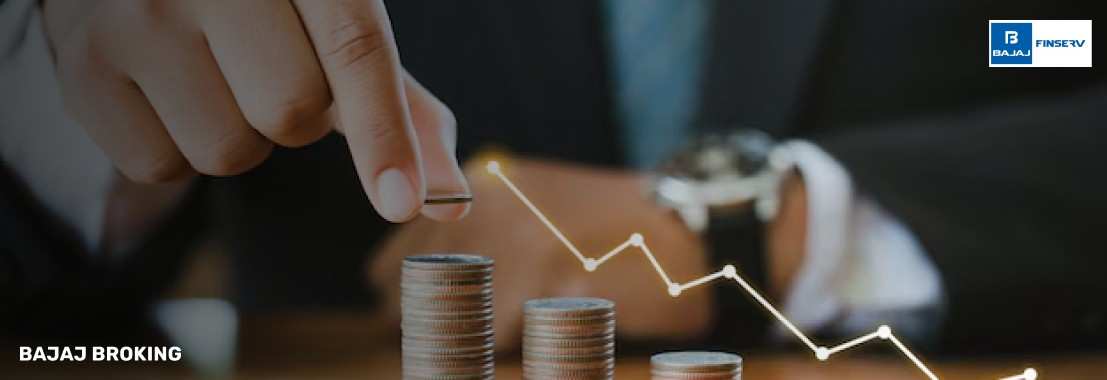Profit After Tax (PAT) is what is left when all prime costs are paid, including operating expenses, any interest on debt, depreciation, and tax dues. It is the real profit, which can be distributed to shareholders and/or reinvested in the business for growth.
In a business context, PAT is more than a number. It is an indicator of healthy performance and provides direction for decisions. PAT communicates to investors that the business has stability. While gross profit and operating profit are certainly important metrics for administrators, they don't tell the full story of how revenue is passed through all expenses and arrives at PAT.
Importance of Profit After Tax
Represents actual earnings
Profit After Tax shows what a business really earned after paying all costs. Unlike gross or operating, Profit After Tax describes a company's financial position at a better stage. With PAT, managers and investors understand if the business is profitable.
Guides dividend payments
Dividends are paid from profits, and Profit After Tax shows what is available for distribution to its owners. Companies with strong PAT can balance rewarding investors with saving some earnings for the future. When it comes to dividends, boards consider PAT.
Impacts the share price
Investors look to Profit After Tax as an indicator of financial strength. Strong earnings often lead to investor confidence, thus driving up the company’s share price. On the other hand, declining PAT creates uncertainty about the shares and lowers the demand for such stocks.
Informs business strategy
Managers understand and monitor Profit After Tax to see if their business strategies are effective. When PAT is trending upward, it proves to be a success. Conversely, if PAT is declining, managers know they need to revisit pricing, operational efficiency, or the cost of inputs. Therefore, PAT is a useful measurement when reviewing business strategies.
Indicates tax efficiency
A steady PAT may suggest that taxes are being managed effectively. By using legal tax-saving measures, businesses can reduce liabilities. On the other hand, fluctuating PAT without revenue changes may highlight gaps in tax planning or compliance.
Supports financial planning
Budgeting and forecasting need accurate figures. PAT shows the profit available after all costs and taxes. Businesses use it to plan expansions, pay debts, or invest in projects. Relying on PAT ensures financial strategies are realistic and sustainable.
How to Calculate Profit After Tax?
The calculation of PAT is simple:
PAT = Total Revenue – (Operating Expenses + Interest + Depreciation + Taxes)
Let us unpack it for clarity. Revenue is reported as sales and any other income. From revenue, we first deduct expenses, including items such as rent, wages, and utilities. We deduct interest payments and depreciation charges next. The final deduction is taxes, which is subtracted to arrive at the net profit, that is, PAT.
PAT Margin
PAT Margin is when PAT is expressed as a percentage of total revenue, allowing it to be a more comparable measure of profit across companies of different sizes.
PAT Margin = (PAT / Total Revenue) × 100
For example, if a company reports Rs. 4,00,000 PAT on Rs. 10,00,000 revenue, the PAT margin is 40%. A higher PAT margin is better, indicating better cost control and efficiency. A lower PAT margin may indicate climbing expenses or less pricing power.
Advantages and Disadvantages of Profit After Tax
Advantages
1. True measure of profitability:
PAT includes every major cost, from rent to interest, making it a dependable indicator of how much a company truly earns. It offers a more complete view of financial health than partial profit figures like gross or operating profit.
2. Important for investors and shareholders:
Investors and shareholders look to the PAT to assess a company's performance. Investors view it as an indicator of the likelihood of potential returns. Shareholders see it as an easier connection to dividends. Positive PAT creates investor confidence, while weakness in PAT causes questions about longer-term viability.
3. Direct effect on dividend returns to the shareholder:
Investors enjoy positive PAT as companies can frequently pay dividends and reinvest for growth. Payment of dividends and reinvestment of funds is a signal that the company has financial strength. A weak PAT may reduce dividends, lower market appeal, and affect investor confidence.
Disadvantages
1. Possibility of manipulation:
PAT can be adjusted through accounting choices, such as depreciation methods or timing of expense recognition. Therefore, PAT figures may not always represent the true financial performance, making it necessary to review supporting details before drawing conclusions.
2. Lack of cash flow representation
PAT includes non-cash expenses. Though they are very relevant for accounting purposes, they can fail to represent the actual cash position of a business. Thus, a business may report significant PAT yet not have sufficient cash remaining. It is fore this reason that analysts review cash flow statements, along with PAT, to gain better insight into cash accessibility.
3. Tax differences as an issue
The tax rates vary across industries which makes it impossible to compare PAT for dissimilar businesses. A business may exhibit a lower PAT simply because it has to apply a higher tax rate than another, not that it has weaker operations. This is why investors need to consider tax discrepancies to compare businesses.
4. Effect of one-off gains or losses
Businesses that, for instance, sell an asset or are going through a lawsuit might show one-off gains or losses. Therefore, it is not an indication of profitability in terms of ongoing business performance. Evaluating longer-term PAT would assist in eliminating the one-off equity gain(s) or loss(es).
Factors Affecting Profit After Tax
Revenue growth
When sales rise, Profit After Tax often increases. But if costs grow faster than revenue, profits may not improve. Growth needs to be managed carefully, otherwise, higher earnings on paper may not translate into actual profitability.
Operating expenses
Costs such as salaries, rents, and utilities have a direct impact on PAT. If expenses increase without any change to revenue, profit will decrease. It is for this reason that businesses keep a close eye on expenses to ensure their actions do not negatively impact financial performance.
Interest
Higher interest on borrowed capital negatively impacts PAT. Generally, higher debt payments equate to smaller earnings of a business. As a result, companies will often refinance or restructure debts to lower interest payments to protect net profits.
Depreciation and amortisation
Depreciation of physical assets, along with amortisation of intangible assets, will reduce the profit, even if no cash leaves the business. Understanding the process of depreciation is important, but in the end, it makes PAT smaller than what it could have been otherwise.
Tax policies
Government tax rules directly influence PAT. Higher rates reduce profits, while incentives or deductions can improve them. Companies plan their taxes carefully to stay compliant and still protect their bottom line wherever possible.
Market conditions
Economic slowdowns, inflation, or recessions decrease consumer demand. With decreasing sales comes weakening PAT. The pressure is felt strongly, as lower demand means revenues drop, but many costs remain fixed or unavoidably incurred.
Competition and pricing
Competition forces companies to lower prices, thus negatively impacting PAT margins. Well-established brands can often maintain pricing and protect profitability. In many situations, effective pricing practices can be the difference between sustaining healthy PAT and being at risk of losing some profitability.
Foreign exchange rates
Global companies face risks related to changes in currency exchange rates. A weaker domestic currency increases the costs of imported goods, thus lowering PAT. Exporters may benefit if their products become less expensive in international markets. Currency exchange movements can have unpredictable impacts on profits.
Strategies to Improve PAT
Increase Sales Revenue
Higher revenue is the most direct way to lift PAT. Expanding product lines, strengthening distribution, or improving marketing can grow sales. But revenue growth only helps when costs remain under control and efficiency is maintained.
Cost Optimisation
Reducing waste, negotiating better supplier deals, and improving productivity all lower costs. Small savings across multiple areas accumulate into meaningful gains for PAT. Careful cost management ensures profitability even when revenues do not rise quickly.
Debt Management
Reducing debt or refinancing at lower rates improves profitability, as does controlling borrowing so that the company can invest for growth, while minimising the burden of interest on net profit.
Tax Planning
The objective of responsible tax planning is to legally reduce tax obligations via pre-tax deductions, government incentives, and proper company structuring to minimise profit. When tax planning ensures that the company complies with the law, but maintains the ability to reinvest profits or reward shareholders, those considerations are consistent with responsible and tax-efficient growth.
Business Process Automation
Process automation reduces human error and minimises redundant costs resulting from repetitive tasks. Technology improvements have sped up billing, how we process bills or invoices and ordering processes. Certainly, lower costs lead to greater revenue retention, benefiting PAT. Consistent technology investment will yield and accommodate profitability and growth without increasing costs.
Efficiency in a Company's Supply Chain
A more efficient supply chain will lead to fewer delays, lower input costs, and improved margins. Companies benefit from better supplier terms and faster deliveries. Smooth supply operations directly influence PAT by cutting waste and improving profitability at multiple points.
Focus on High-Margin Products
Products with stronger margins contribute more to PAT. By promoting or expanding these offerings, companies can raise profitability without major increases in volume. This strategy helps businesses use existing capacity more effectively while strengthening financial performance.
Conclusion
Profit After Tax is a measure of profitability. It accounts for every major deduction. It builds investor trust, shapes business strategy, and guides financial planning. A growing PAT reflects balanced management, while a falling figure warns of risks. For businesses, the goal is clear — manage costs, plan taxes wisely, and keep earnings strong enough to sustain long-term growth.





